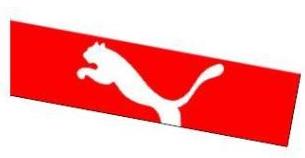
Sportlifestyle Company PUMA publishes first-ever Product Environmental Profit and Loss Analysis identifying and comparing environmental impacts of more sustainable and conventional products across production and consumer life phases in Euros and Cents.
Did you know that 31 waste disposal trucks are needed to clear the waste that 100,000 pairs of conventional sneakers cause during the production process and consumer life until their owners throw them away and they end up in landfills or incinerators? This is an insight gained from the first PUMA Product Environmental Profit and Loss (EP&L) Account for four selected footwear and apparel styles.
The company has started to extend the groundbreaking PUMA E P&L from 2010 to the product level and applied the analysis to two more sustainable and two conventional products: a pair of company soon to be launched biodegradable PUMA InCycle Basket shoes and a biodegradable cotton PUMA T-shirt versus a pair of the conventional retro PUMA Suede shoes and a conventional cotton PUMA T-shirt.
This helps us to establish whether company’s efforts to become a more sustainable company and develop more sustainable products are in fact making a positive difference. This first-ever PUMA Environmental Profit and Loss Account for products is a big step forward on mission journey to become the world’s most desirable and sustainable Sportlifestyle company.
The PUMA Product E P&L, which company developed with the support of PPR’s sustainability department PPR HOME as well as consulting firms Trucost and PwC, furthermore revealed that the new biodegradable PUMA shoe InCycle Basket and the biodegradable cotton T-shirt cause 31% less environmental impacts than their conventional counterparts. The analysis focussed on the environmental impacts caused by Greenhouse Gas (GHG) emissions, waste and air pollution as well as the use of natural resources such as water and land along the entire value chain from the generation of raw materials and production processes to the consumer phase when customers use, wash, dry, iron and finally dispose of the products.
Dr. Richard Mattison, Chief Executive of Trucost said: “Environmental impacts traditionally have different units of measurement, making it difficult to compare the overall environmental impact of different products and this can be confusing for consumers. One product may have a high water impact, another may be more carbon intensive or cause more pollution. Measuring the environmental impact in Euros and Cents allows companies to create an overall metric for each product that takes into account many different environmental factors. The PUMA Product E P&L allows company managers to embed sustainability within everyday product design and procurement decisions and provides consumers with information on which products are better for the planet.”
Source:
http://www.fibre2fashion.com/news/apparel-news/newsdetails.aspx?news_id=116672




